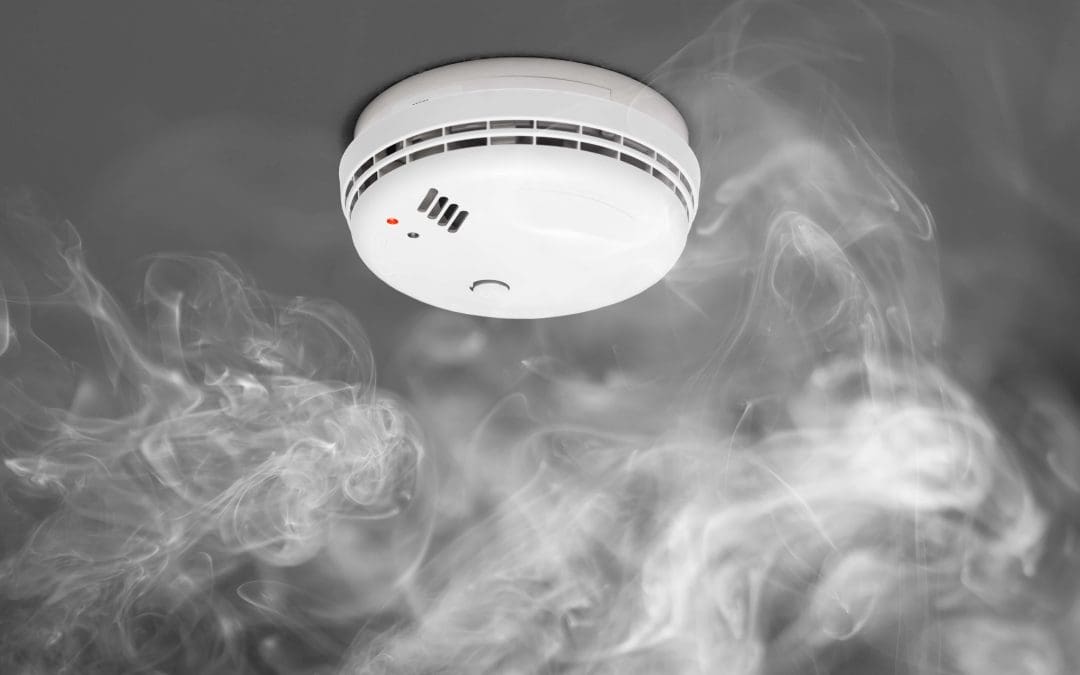A devastating fire quickly turns a home into a dangerous trap. While prevention is key, early detection is crucial for your family’s safety. Smoke detectors are your home’s first line of defense, providing that vital early warning that gives you precious time to escape. Here are our tips for smoke detector placement to keep you and your family safe.
Understanding Smoke Detector Technology
Ionization detectors are typically more responsive to fast-flaming fires, like those caused by grease or paper. They work by ionizing the air between two plates. When smoke particles enter the chamber, they disrupt the ionization current and trigger the alarm.
Photoelectric detectors are generally more responsive to smoldering fires, such as those caused by smoldering fabrics or burning wood. They use a beam of light scattered by smoke particles, triggering the alarm.
Many modern smoke detectors combine ionization and photoelectric sensors, offering the best of both worlds in terms of fire detection capabilities.
Strategic Placement for Maximum Protection
Proper placement of smoke detectors helps them effectively detect a fire and alert you in time. Install at least one smoke detector on every level of your home, including the basement and attic. Place a smoke detector in every bedroom. Install a smoke detector outside each sleeping area, typically in the hallway. If a hallway exceeds 40 feet, add additional smoke detectors. Install smoke detectors in common areas like living rooms, family rooms, dens, and kitchens.
Optimizing Smoke Detector Placement for Effectiveness
Mount detectors high on walls or ceilings. Wall-mounted detectors should be installed 4 to 12 inches below the ceiling. Ceiling-mounted detectors are generally preferred for optimal coverage as smoke tends to rise. Avoid placing detectors near windows, doors, or air vents, as drafts interfere with their operation and prevent smoke from reaching the sensor. Keep detectors at least 10 feet away from cooking appliances to minimize false alarms triggered by cooking fumes. Interconnected smoke alarms are highly recommended. When one detector sounds, they all sound, providing a unified warning throughout the home and alerting everyone in the household, even if the fire is in a distant part of the house.
Special Considerations
If your home has pitched ceilings, install detectors within three feet of the peak. For large open floor plans, install additional detectors for adequate coverage in all areas. Both hardwired and battery-powered smoke detectors offer effective protection. Hardwired detectors provide continuous power and are typically connected to your home’s electrical system. Battery-powered detectors offer flexibility in placement and are easier to install.
Regular Maintenance
Test your smoke detectors monthly by pressing the test button. This confirms the alarm is functioning and helps familiarize you with the sound. Replace batteries in battery-powered detectors at least twice a year, ideally when you change your clocks for daylight saving time. Replace smoke detectors every 10 years, regardless of their condition.
By following these guidelines and prioritizing smoke detector maintenance, you’ll enhance your home’s safety and protect your loved ones from the devastating effects of fire.
FAQs About Smoke Detector Placement
How much does it cost to install smoke detectors?
The cost of smoke detectors varies depending on the type and number of detectors you choose. Installation costs also vary depending on the complexity of the installation and whether you decide to install them yourself or hire a professional.
Do I need to install smoke detectors in my rental property?
Yes, most jurisdictions have laws requiring landlords to install and maintain smoke detectors in rental properties.
What should I do if my smoke detector is beeping?
If your smoke detector is beeping, it usually indicates a low battery or a potential malfunction. Replace the batteries first. If the beeping continues, contact a qualified technician for assistance.
Can pets trigger smoke detectors?
While it’s unlikely that pets will trigger a smoke detector, excessive pet dander can sometimes cause false alarms in sensitive detectors.
What should I do if I experience frequent false alarms from my smoke detectors?
If you are experiencing frequent false alarms, try switching to a different type of detector. Make sure the batteries in your smoke detectors are fresh and properly installed. Dust and debris can accumulate on the sensors and interfere with their operation. Gently vacuum or use compressed air to clean the detectors. If your detectors are located near cooking areas, they may trigger false alarms due to smoke or steam. If you continue to experience problems, contact a qualified technician to inspect and service your smoke detectors.
Home Right Property Inspections offers inspections to homebuyers and sellers in the southern California area. Contact us to request our services.

